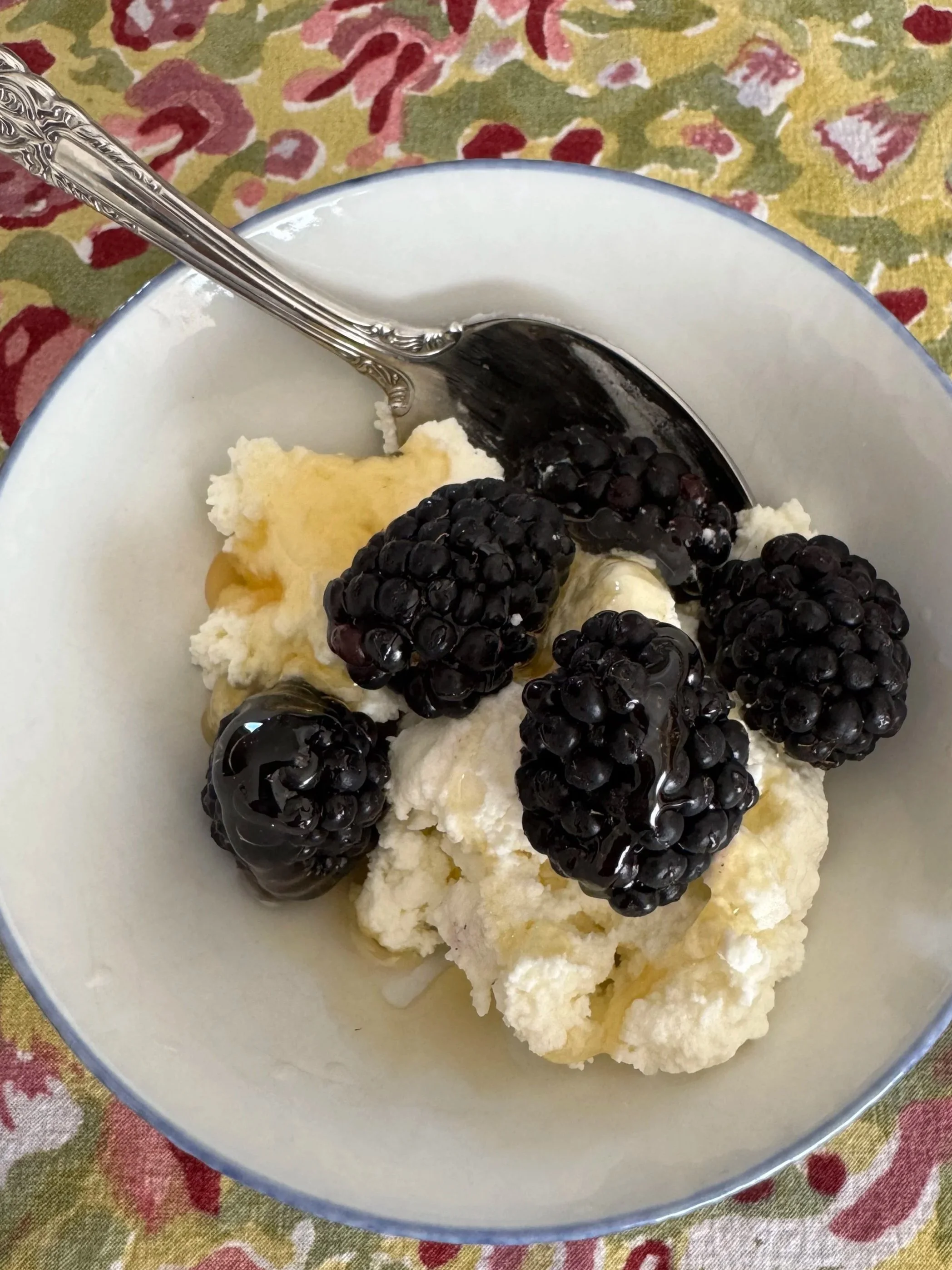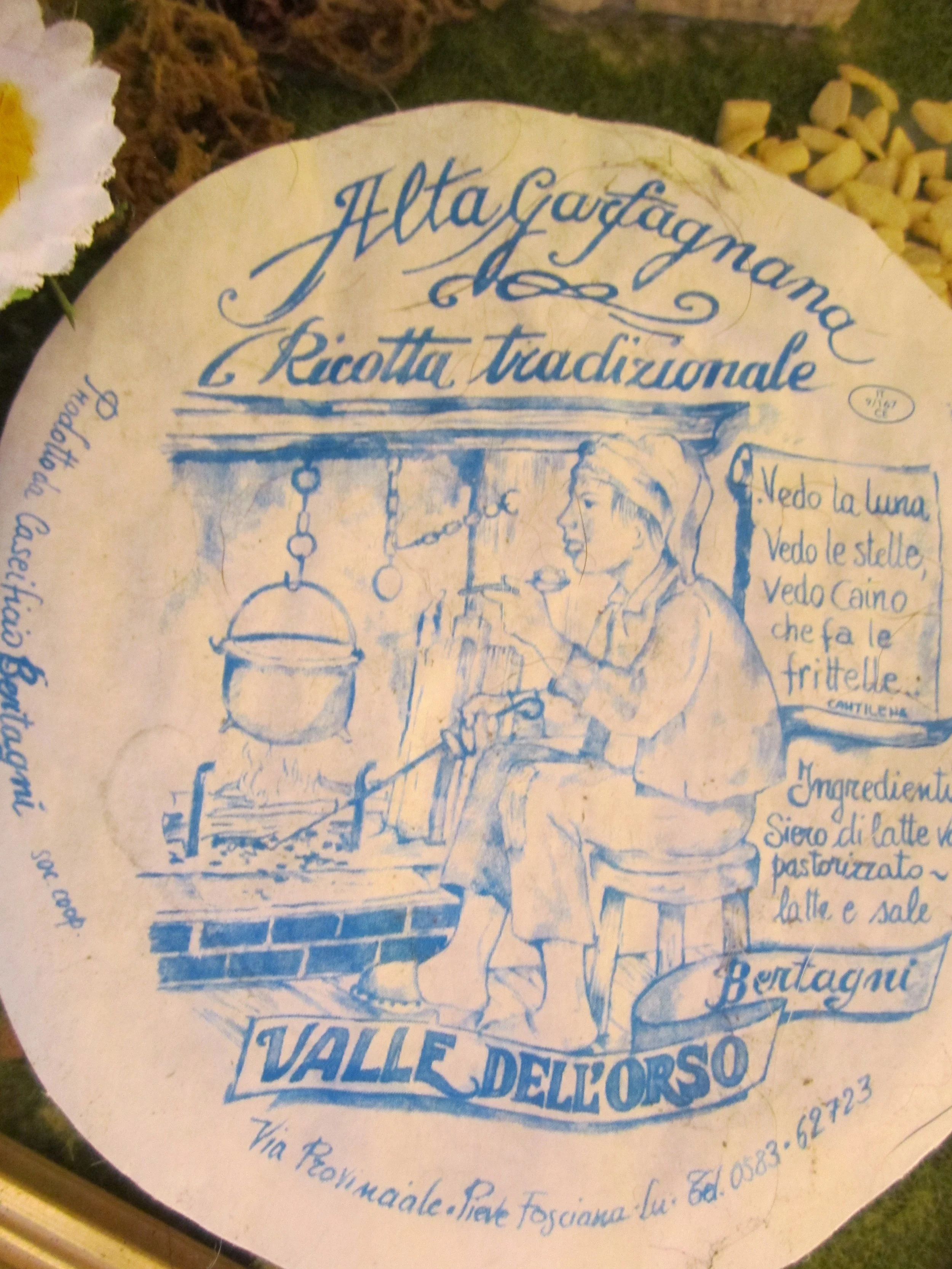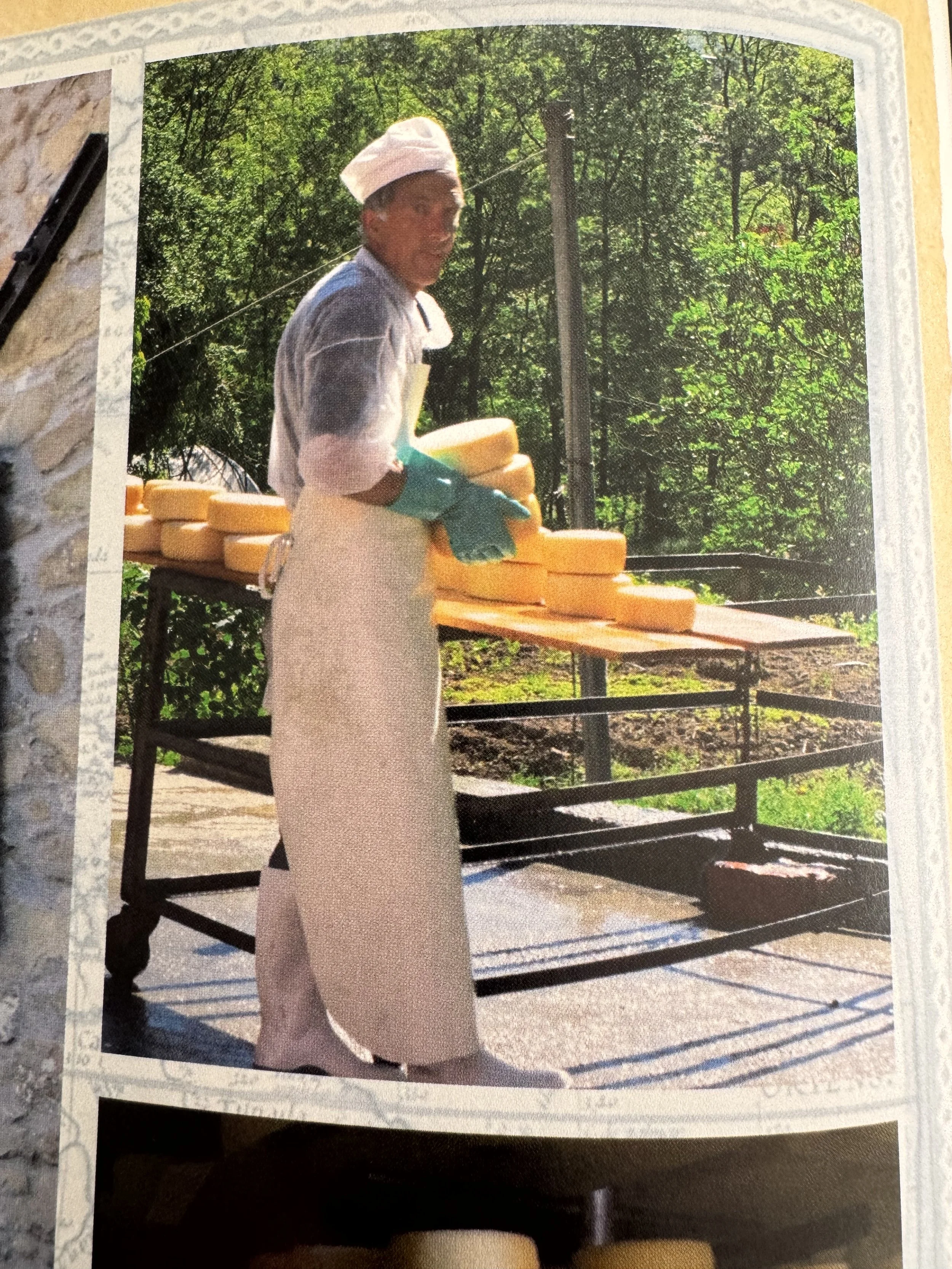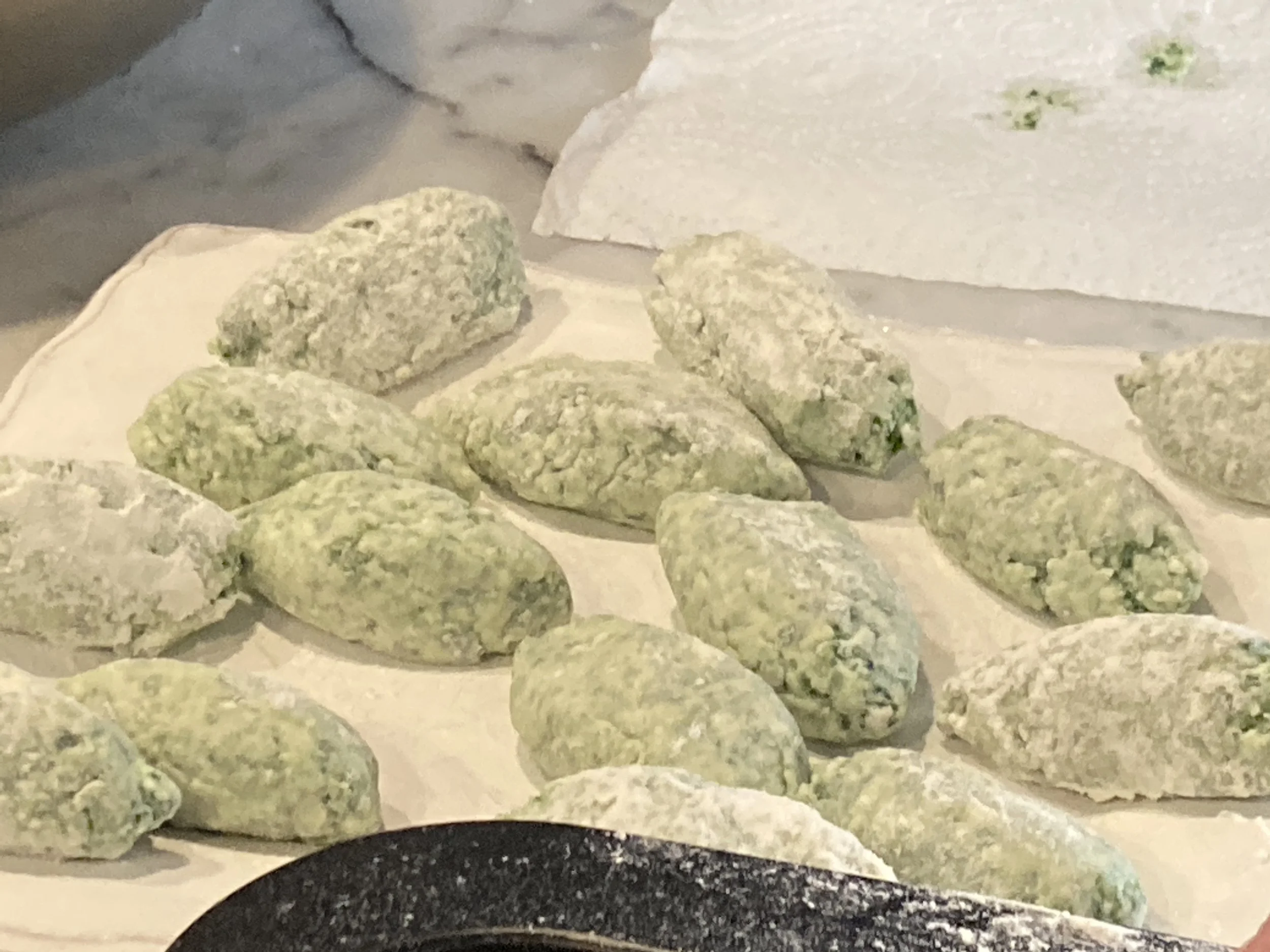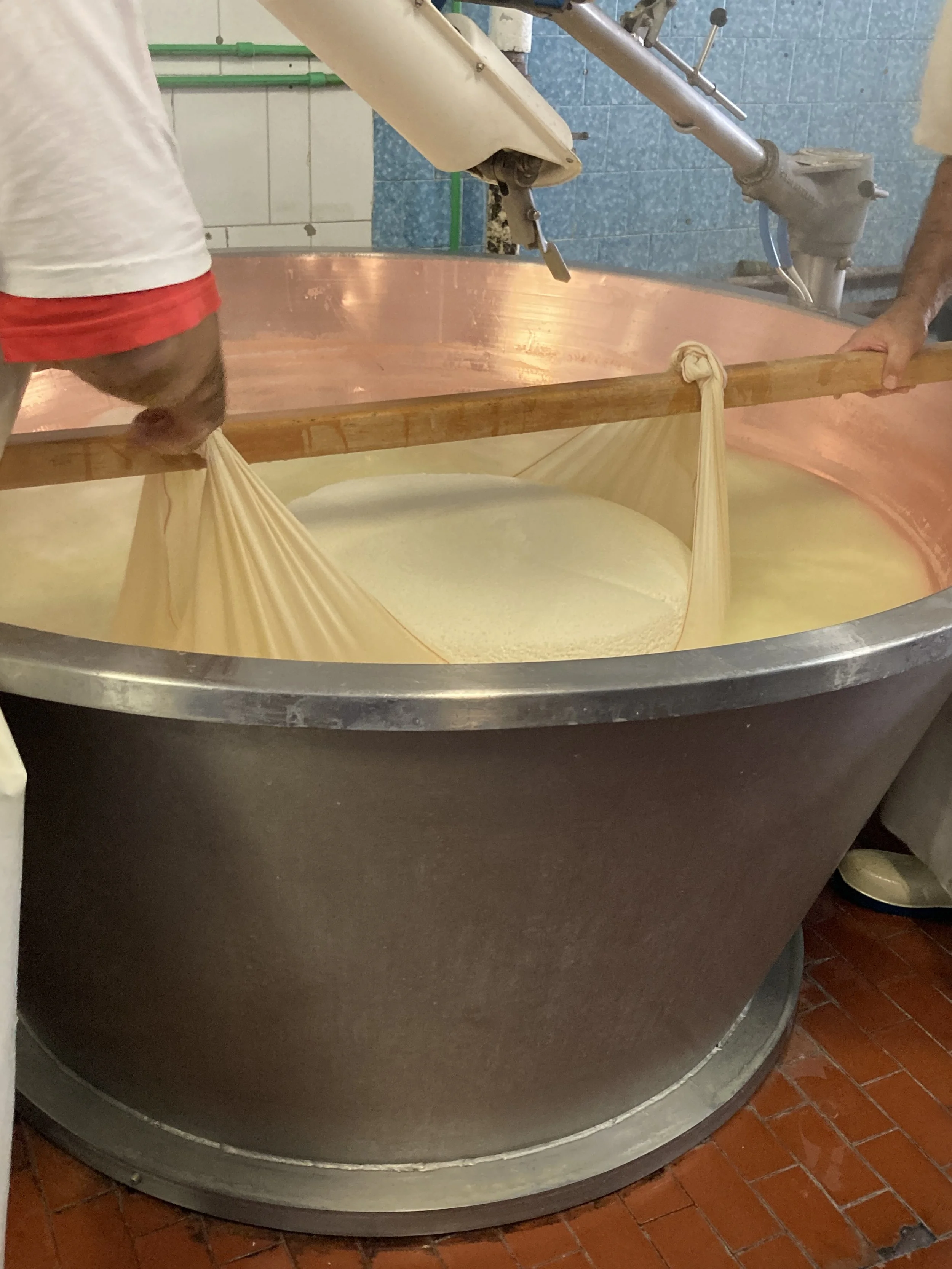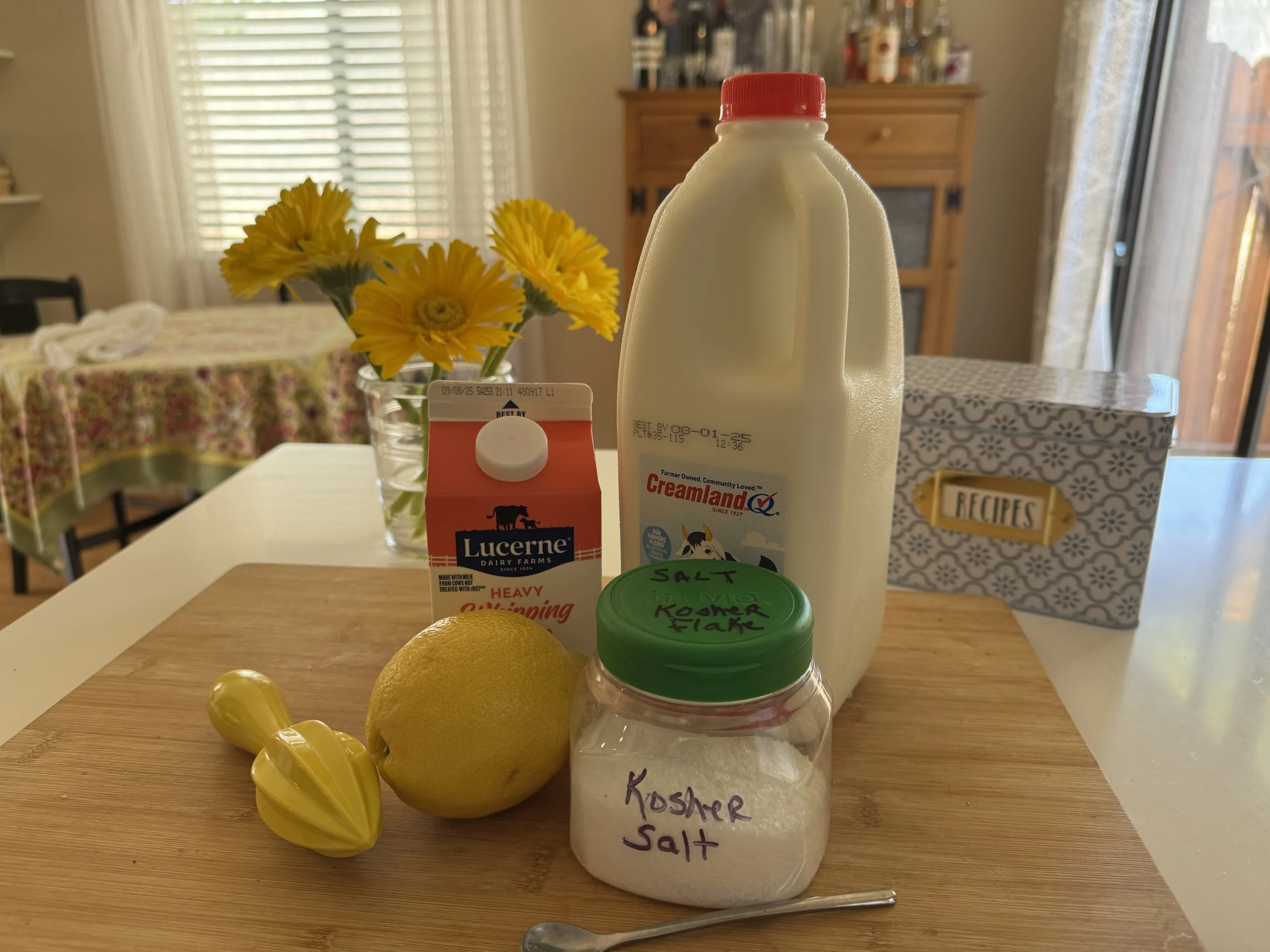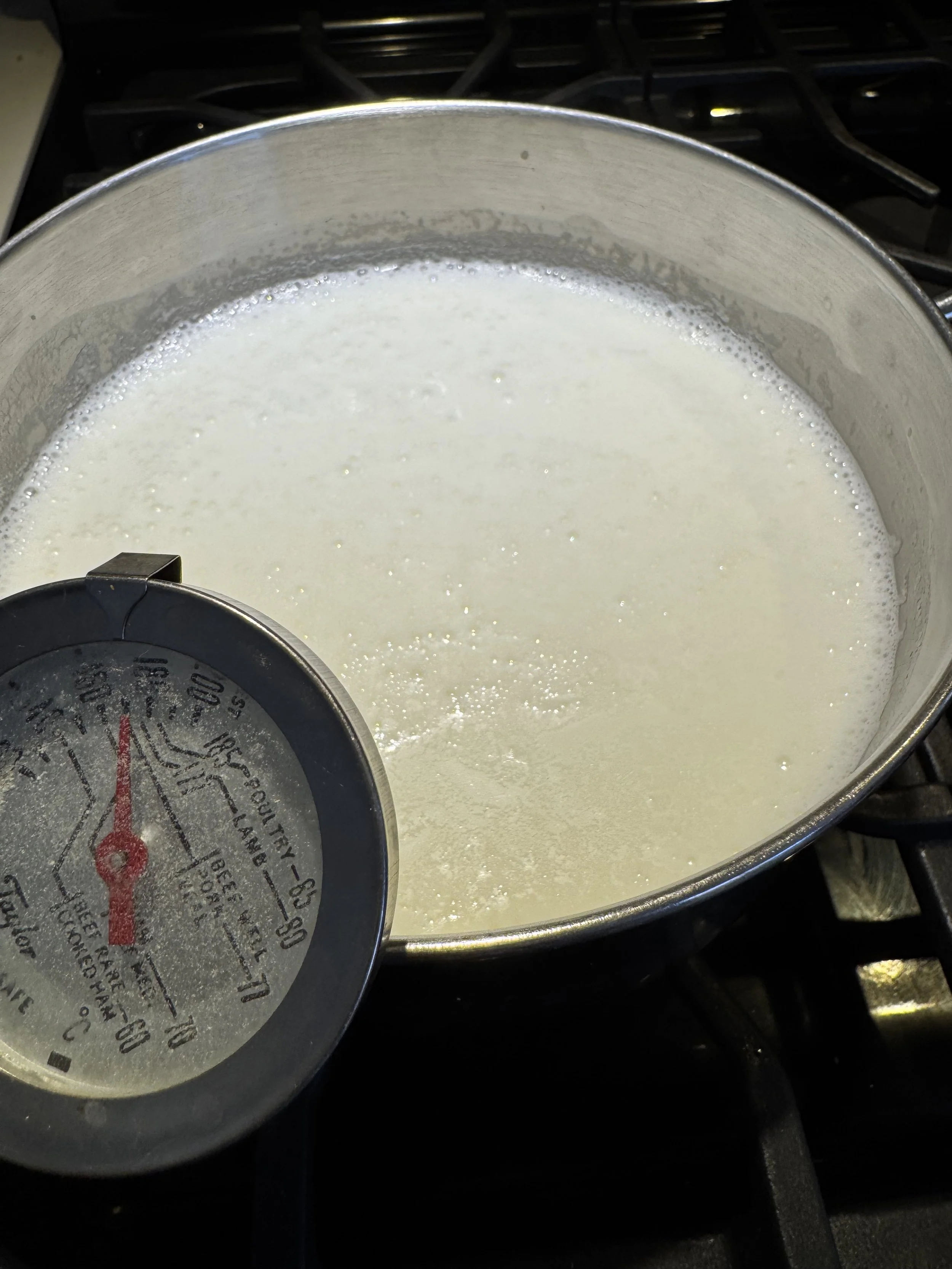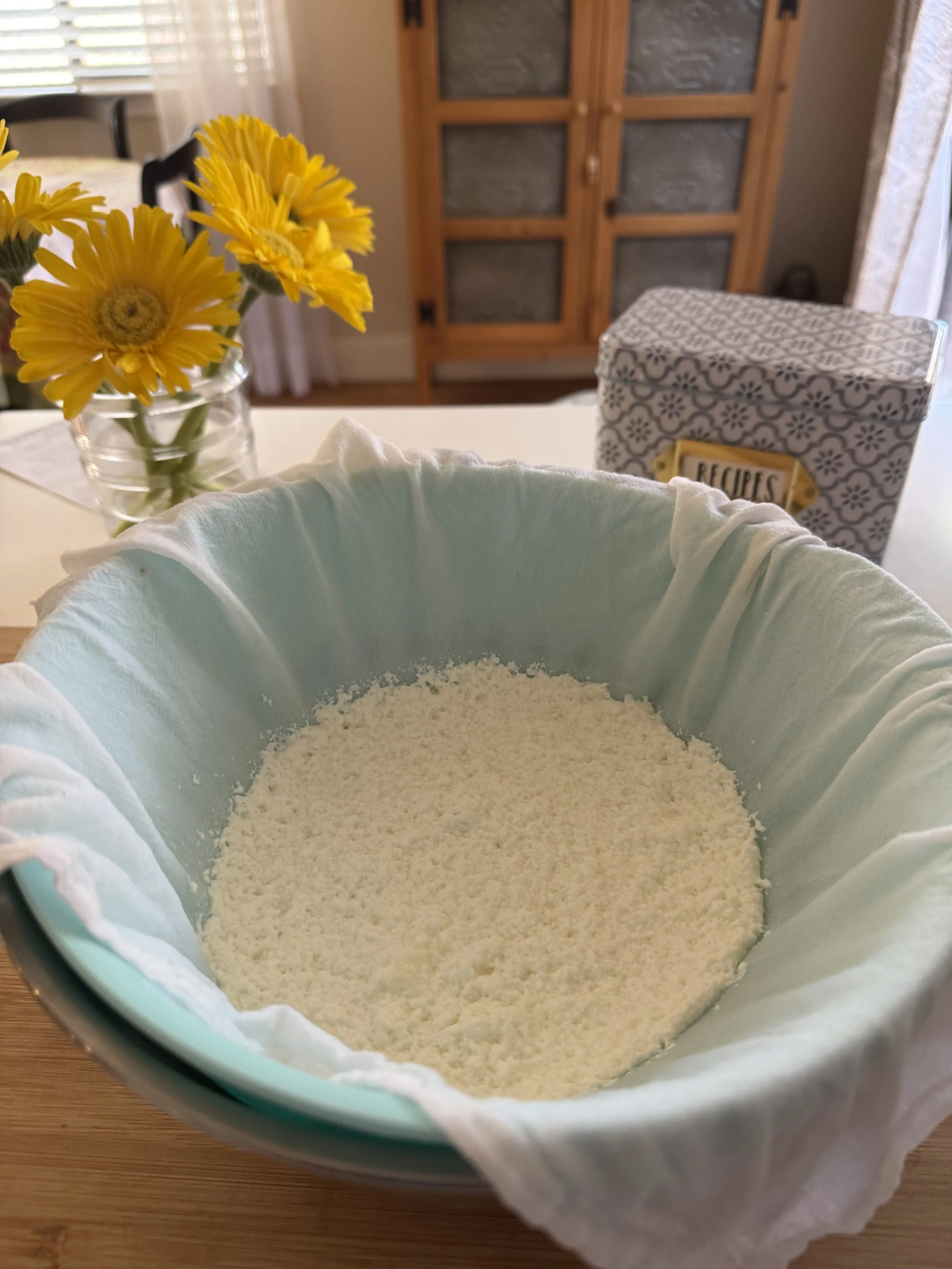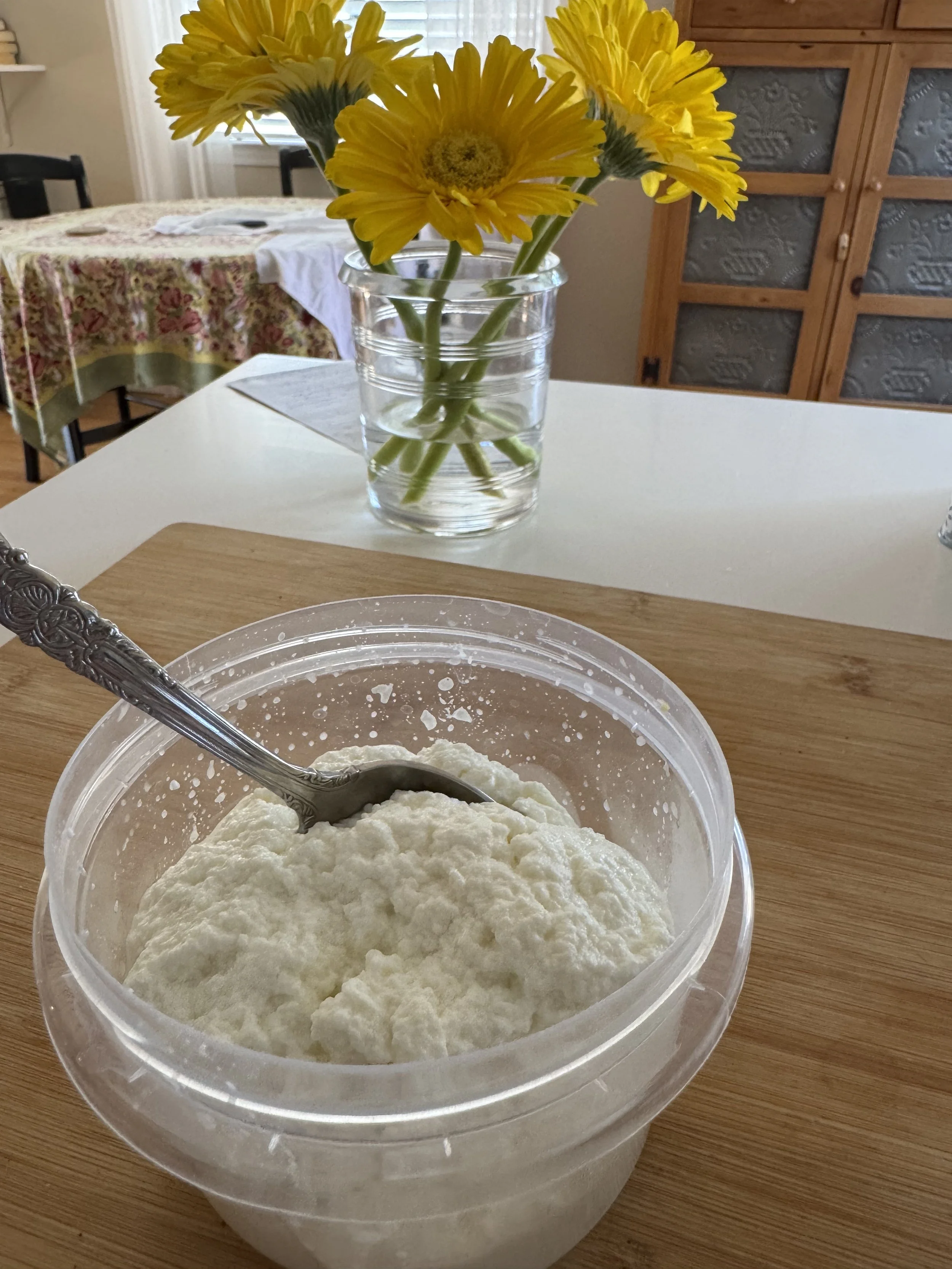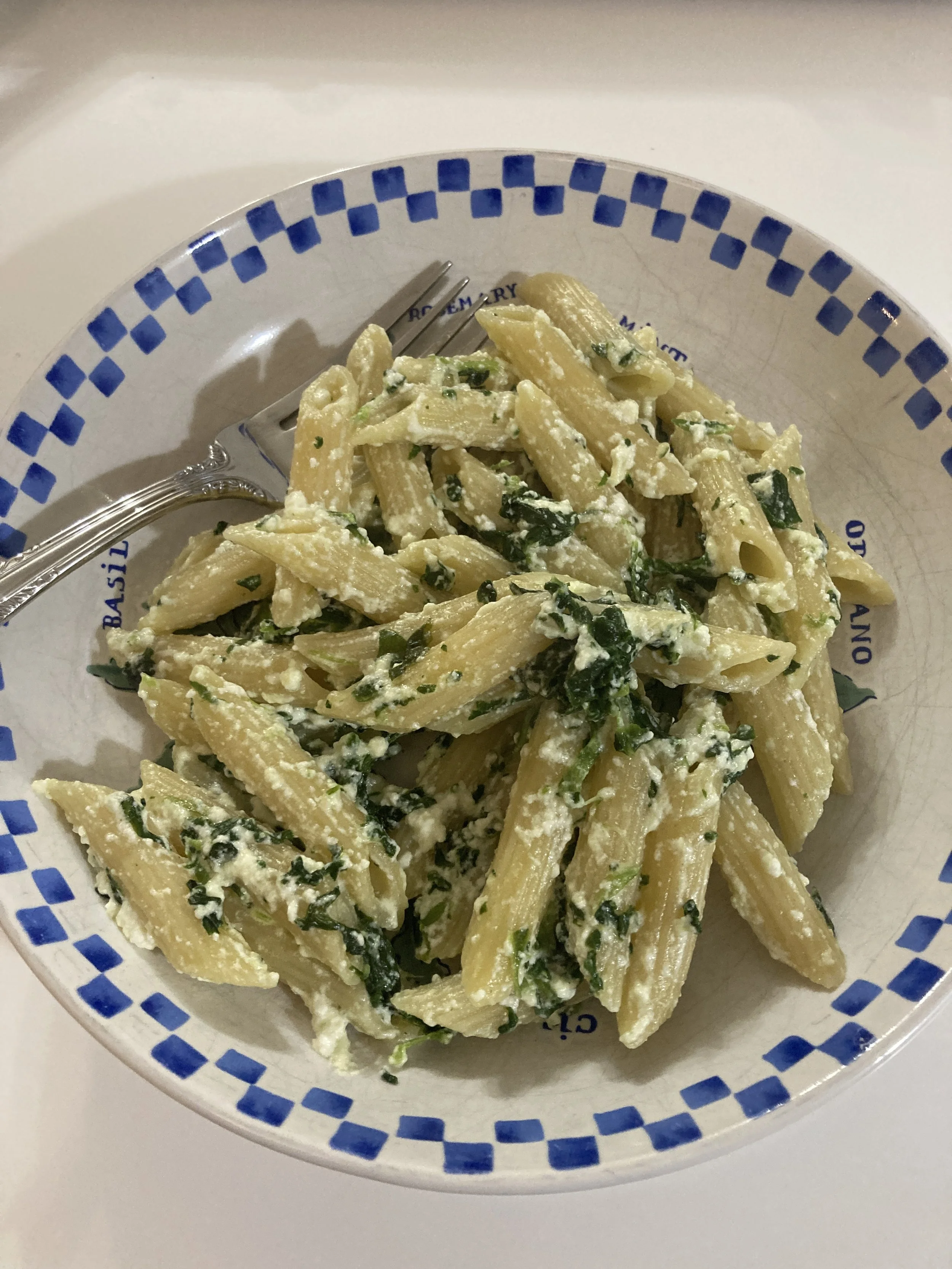From My Italian Kitchen, Fresh Ricotta
Cheese making is an Italian artform. Parmigiano Reggiano, Mozzarella, Burrata, Pecorino Romano, Grana Padano, Gorgonzola …. the list goes on and on. Italian cheeses include aged ones (Parmigiano Reggiano and Pecorino Romano for example) and fresh ones (like mozzarella, burrata, and ricotta). The flavors and textures vary by region, aging process, and with the type of milk used. Cow, goat, sheep, and water buffalo milks are all used in Italian cheese making.
I have been interested in the cheese making process since my first visit to an Italian artisanal dairy (an excursion arranged by Lucca Italian School). Up in the Garfagnana, the small Bertagni dairy made a few cheeses, including a fresh ricotta. Growing up in an Italian American family, where the word for this cheese was pronounced “riggot” and where sometimes my mother would – gasp – substitute cottage cheese for the ricotta in lasagna, the introduction to real Italian fresh Ricotta was a revelation.
There is a distinctive perfume to a caseificio (dairy) as the milk is heated and the curds form. Observing the master cheese makers at work is fascinating as they judge the process by some sixth sense to know when the milk is just the right temperature and when the curds are formed just enough to be scooped out. Seeing the soft curds of ricotta transferred to baskets to drain is quite a tease because the fresh cheese just begs to tasted.
Ricotta is a bit of a trickster in the world of cheeses. It is soft, creamy, and mild but able to adapt its flavor to a variety of dishes. It lends itself to foods both sweet and savory or stands alone with perhaps just a touch of honey, jam, or fruit. It fills sweet delicacies like necci (a type of chestnut flour pancake) and is an essential ingredient in gnudi (a ricotta spinach dumpling). It can top bruschetta or make a wonderful addition to pastas and lasagnas. And a sweet ricotta torta makes a wonderful dessert. (Below: Chef Giuseppe teaching gnudi making in a class at The Olive Press Kitchen)
The traditional way of making ricotta (the name translates to re-cooked) uses the whey leftover from making other cheeses. The whey is reheated, perhaps with a little milk added in, along with an acid to encourage the formation of curds from the proteins and fats left behind in the whey.
The large cheese being lifted here will become a wheel of Parmigiano Reggiano. Left behind is the whey which will be reheated to make ricotta.
I admit that I am very spoiled by the quality of fresh from the dairy ricotta that is available in Italy. The commercially produced ricotta that I find when I am in the US just can’t compare. Since I am currently in the US for my annual summer visit with my kids, I decided to try my hand at making homemade ricotta to see if I could come close to the authentic taste of the fresh cheese.
4 ingredients is all that is needed to make a batch of home made ricotta.
Most recipes for homemade ricotta vary from the traditional method in that they use milk rather than whey (after all, getting a supply of whey available to the home cook is not so easy). I searched the internet for recipes and found that all had some common elements – whole milk and the use of either vinegar or lemon juice as the acid. Some added a bit of cream. I settled on one from the website Delish.com with just a few minor tweaks. Following their recipe, I combined 3 ¾ cups whole milk, ¼ cup heavy cream, and a pinch of salt. I then heated the mixture to 185 degrees (it should not boil but will have bubbles simmering at the pan edge and lots of steam rising). This step took about 20 minutes.
The addition of 2 tablespoons of lemon juice (a touch more than the original recipe called for), and a stir, quickly led to the formation of the curds just like magic. The heat was then turned down to the lowest setting and the mixture simmered for an additional 15 minutes without stirring.
Next step was to pour the mixture into a cheesecloth lined colander set over a large bowl and let it drain for 5 minutes or so. And that’s it! Fresh ricotta.
Penne with spinach and ricotta
Warm from the strainer it tasted lovely. Into the fridge it went where it is best eaten within 3 or 4 days. From the total of 4 cups of milk/cream used the yield was about 1 cup of ricotta. There was still a lot of whey left over – next time I will try using that and see how much more ricotta I can get. Was this identical to the flavor I get in Italy? Not quite. After all the cow’s here are different, their grazing habitat is not the same, and so the milk will never be quite the same. But was it better than the commercial ricotta available to me? Definitely. Will I make this when I return to Italy ? No way! In Italy the authentic product is easy to find.
How did I use the ricotta? It made a wonderful breakfast the next morning with a drizzle of honey and some berries. A day later, it was wonderful in Marcella Hazan’s recipe for penne with ricotta and spinach.
I was pleased to find out how easy this process was and what a treat to have fresh ricotta!
